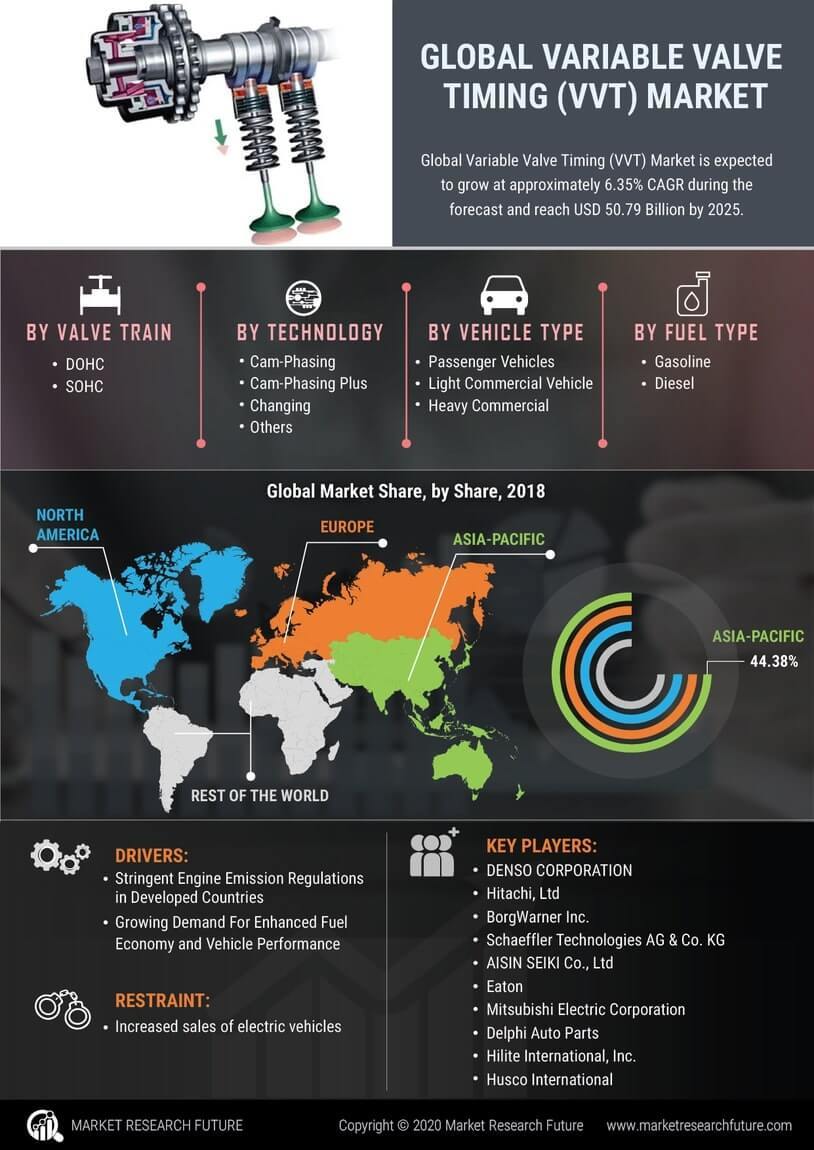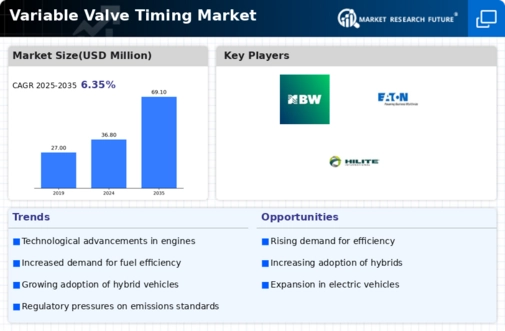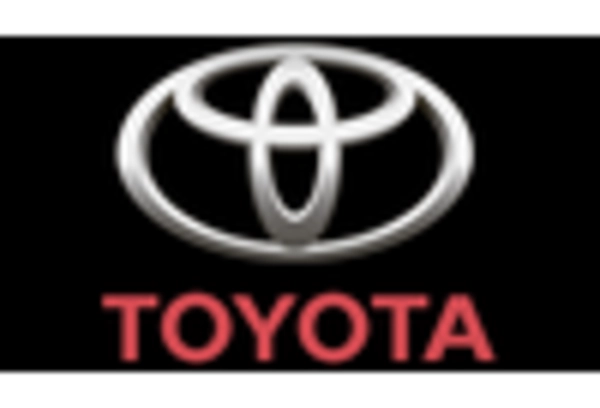The Variable Valve Timing Market is currently characterized by a dynamic competitive landscape, driven by technological advancements and increasing demand for fuel-efficient vehicles. Major players such as Toyota Motor Corporation (JP), Honda Motor Co., Ltd. (JP), and General Motors Company (US) are actively shaping the market through strategic initiatives focused on innovation and sustainability. These companies are not only enhancing their product offerings but are also investing in research and development to improve engine performance and reduce emissions, thereby aligning with global environmental standards.
In terms of business tactics, companies are increasingly localizing manufacturing to optimize supply chains and reduce operational costs. The market structure appears moderately fragmented, with several key players exerting considerable influence. This fragmentation allows for a variety of competitive strategies, as companies seek to differentiate themselves through technological advancements and customer-centric solutions.
In November 2025, Toyota Motor Corporation (JP) announced a partnership with a leading technology firm to develop advanced AI-driven systems for optimizing valve timing in hybrid engines. This strategic move is expected to enhance the efficiency of their hybrid models, positioning Toyota as a leader in the eco-friendly vehicle segment. The integration of AI into their manufacturing processes may also streamline operations and reduce production costs, further solidifying their competitive edge.
Similarly, in October 2025, Honda Motor Co., Ltd. (JP) unveiled a new line of engines featuring enhanced variable valve timing technology aimed at improving fuel efficiency by up to 15%. This innovation not only reflects Honda's commitment to sustainability but also addresses the growing consumer demand for more efficient vehicles. By focusing on cutting-edge technology, Honda is likely to attract environmentally conscious consumers and strengthen its market position.
In September 2025, General Motors Company (US) launched a new initiative to retrofit existing models with advanced variable valve timing systems, thereby extending the lifecycle of older vehicles. This initiative not only demonstrates GM's commitment to sustainability but also provides an opportunity to capture a segment of the market that seeks cost-effective solutions. By enhancing the performance of older models, GM may foster brand loyalty and encourage repeat purchases.
As of December 2025, the competitive trends in the Variable Valve Timing Market are increasingly influenced by digitalization, sustainability, and the integration of AI technologies. Strategic alliances among key players are shaping the landscape, allowing for shared resources and knowledge. The shift from price-based competition to a focus on innovation and technology is evident, as companies prioritize supply chain reliability and advanced engineering solutions. Looking ahead, competitive differentiation will likely hinge on the ability to innovate and adapt to changing consumer preferences, with a strong emphasis on sustainable practices and technological advancements.

















Leave a Comment